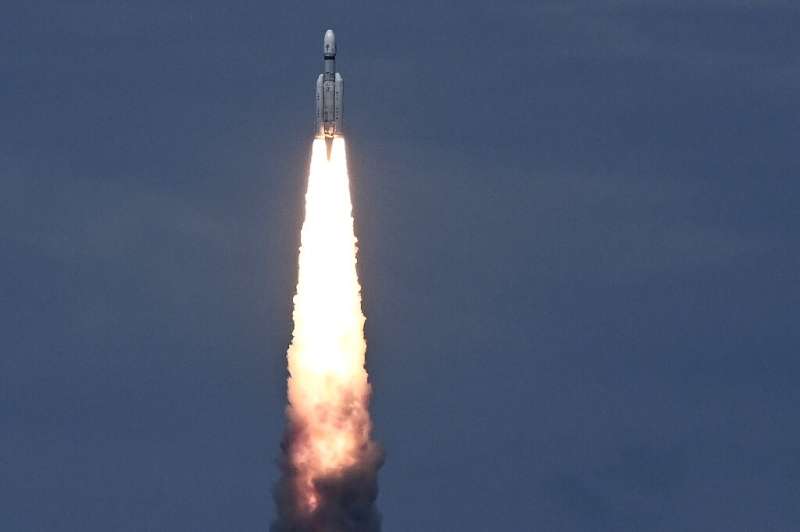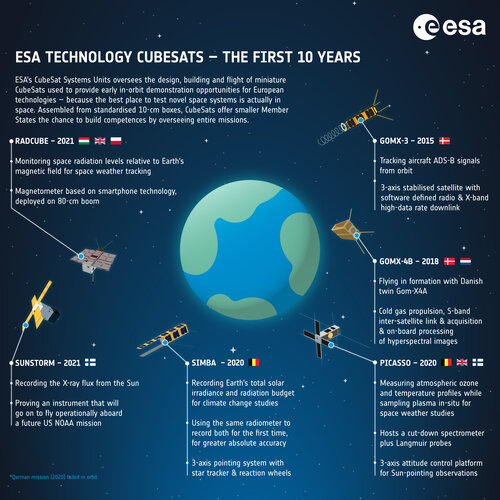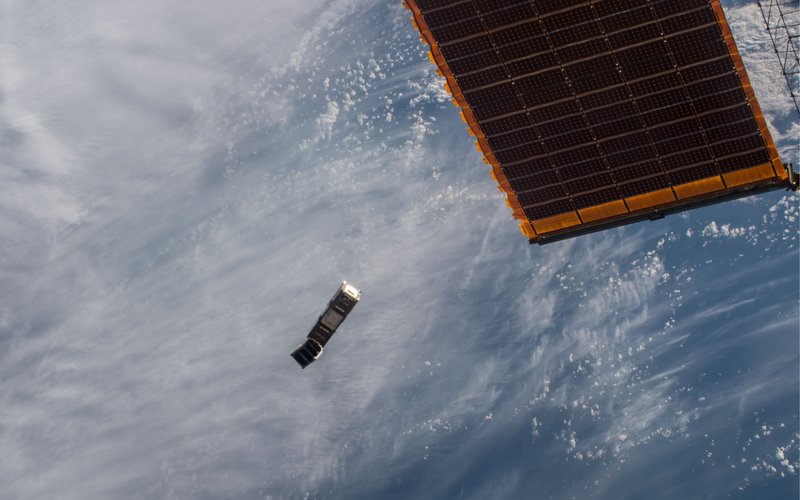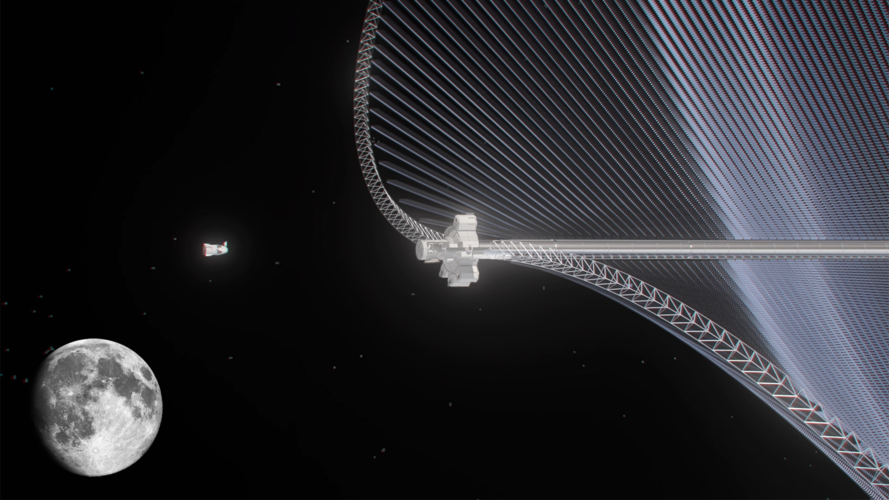Week in images: 10-14 July 2023
Friday, 14 July 2023 12:18
Week in images: 10-14 July 2023
Discover our week through the lens
House and Senate appropriators cut NASA’s budget
Friday, 14 July 2023 11:12
House and Senate appropriators have drafted bills that would give NASA slightly less money in 2024 than it received in 2023, rather than the significant increase the administration requested.
India launches rocket to land spacecraft on Moon
Friday, 14 July 2023 10:51 India on Friday launched a rocket seeking to land an unmanned spacecraft on the surface of the Moon, a live feed showed, its second attempt to become only the fourth country to do so.
The rocket lifted off from Sriharikota in the southern state of Andhra Pradesh carrying the Chandrayaan-3 spacecraft, as thousands of enthusiasts clapped and cheered.
The world's most populous nation has a
India on Friday launched a rocket seeking to land an unmanned spacecraft on the surface of the Moon, a live feed showed, its second attempt to become only the fourth country to do so.
The rocket lifted off from Sriharikota in the southern state of Andhra Pradesh carrying the Chandrayaan-3 spacecraft, as thousands of enthusiasts clapped and cheered.
The world's most populous nation has a India launches cut-price mission to land on Moon
Friday, 14 July 2023 10:39
India launched a rocket on Friday carrying an unmanned spacecraft to land on the Moon, its second attempt to do so as its cut-price space program seeks to reach new heights.
The heavyweight LVM3-M4 rocket lifted off from Sriharikota in the southern state of Andhra Pradesh carrying the Chandrayaan-3 spacecraft, as thousands of enthusiasts clapped and cheered.
"Chandrayaan-3... has begun its journey to the Moon. Health of the spacecraft is normal," the Indian Space Research Organisation (ISRO) said on Twitter.
The world's most populous nation has a comparatively low-budget aerospace program that is rapidly closing in on the milestones set by global space powers.
Only Russia, the United States and China have previously achieved a controlled landing on the lunar surface.
India's last attempt to do so ended in failure four years ago, when ground control lost contact moments before landing.
India launches Chandrayaan-3 lunar landing mission
Friday, 14 July 2023 10:25
India successfully launched a robotic lunar lander July 14, setting up the nation for its second attempt to soft-land on the moon.
The promise of direct-to-device
Friday, 14 July 2023 09:30
Direct-to-device could be revolutionary for space connectivity, but a market for it remains fraught with unknowns as early services begin testing the waters.
Infographic: ESA Technology CubeSats, the first 10 years
Friday, 14 July 2023 08:25 Image:
Infographic: ESA Technology CubeSats, the first 10 years
Image:
Infographic: ESA Technology CubeSats, the first 10 years The future, by the box: 10 years of ESA Technology CubeSats
Friday, 14 July 2023 08:20
Imagine building yourself a small satellite out of standardised 10-cm boxes. Such humble nanosatellites are called CubeSats, first devised as an educational tool but increasingly performing valuable work in space. ESA’s CubeSat Systems Unit has been utilising CubeSats for a decade now to test out innovative new technologies – resulting in seven missions to date with many more on the way.
The sound of Aeolus will blow you away
Friday, 14 July 2023 08:00
After almost five years, ESA’s Aeolus wind satellite has completed its mission. Now, you can listen to the Life of Aeolus – an incredible wind orchestral piece that has been composed using data spanning Aeolus’ entire life in orbit around Earth.
Lunar solar power satellite
Friday, 14 July 2023 07:47 Image:
Lunar solar power satellite
Image:
Lunar solar power satellite Earth from Space: Ethiopian painting
Friday, 14 July 2023 07:00 Image:
Reminiscent of an artist’s pallet, this striking false-colour image captured by the Copernicus Sentinel-2 mission features Lake Abbe in northeast Ethiopia.
Image:
Reminiscent of an artist’s pallet, this striking false-colour image captured by the Copernicus Sentinel-2 mission features Lake Abbe in northeast Ethiopia. ESA moves ahead with In-Orbit Servicing missions
Friday, 14 July 2023 06:45
Isn’t it strange that when satellites run out of fuel or a single component breaks down, we just discard them? ESA and European industry have joined forces to make sure that our satellites can live on.
Japan rocket engine explodes during test: official
Friday, 14 July 2023 05:14 A Japanese rocket engine exploded during a test on Friday, an official said, in the latest blow to the country's space agency.
The Epsilon S - an improved version of the Epsilon rocket that failed to launch in October - blew up "roughly 50 seconds after ignition", science and technology ministry official Naoya Takegami told AFP.
The testing site in the northern prefecture of Akita was
A Japanese rocket engine exploded during a test on Friday, an official said, in the latest blow to the country's space agency.
The Epsilon S - an improved version of the Epsilon rocket that failed to launch in October - blew up "roughly 50 seconds after ignition", science and technology ministry official Naoya Takegami told AFP.
The testing site in the northern prefecture of Akita was Rocket Lab readies launch of seven satellites from New Zealand
Friday, 14 July 2023 05:14 California-based Rocket Lab plans to launch seven miniature satellites that will gather data on Earth's atmosphere to improve weather forecasting, replace a decommissioned technology spacecraft and send twin navigation satellites into space.
This mission, which Rocket Lab calls Baby Come Back, will involve a launch on an Electron rocket as early as Friday from New Zealand's Mahia Peninsula
California-based Rocket Lab plans to launch seven miniature satellites that will gather data on Earth's atmosphere to improve weather forecasting, replace a decommissioned technology spacecraft and send twin navigation satellites into space.
This mission, which Rocket Lab calls Baby Come Back, will involve a launch on an Electron rocket as early as Friday from New Zealand's Mahia Peninsula China's methane-fueled rocket achieves global first with successful orbital insertion
Friday, 14 July 2023 05:14 The first successful orbital mission of a methane-fueled rocket has been accomplished by China, a significant breakthrough in the utilization of low-cost and environmentally friendly liquid propellants for carrier rockets. The rocket, known as ZQ 2 or Rosefinch 2, launched from the Jiuquan Satellite Launch Center located in China's northwestern Gobi Desert on Wednesday morning.
The Beijing
The first successful orbital mission of a methane-fueled rocket has been accomplished by China, a significant breakthrough in the utilization of low-cost and environmentally friendly liquid propellants for carrier rockets. The rocket, known as ZQ 2 or Rosefinch 2, launched from the Jiuquan Satellite Launch Center located in China's northwestern Gobi Desert on Wednesday morning.
The Beijing 
